This life always throws me a blow
Never cuts me slack
But always gets me back
I thought I could reach you…But you’re top shelf
In the luminous land of live music, artists execute memorable performances, but the spectacle belies a stark economic reality. These entertainers also serve as pivotal economic players, sustaining the livelihoods of tour managers, session musicians, agents, photographers, make up artists, and designers. They absorb the substantial costs of touring—crew salaries, insurance, travel, lodging, and equipment—which all weigh heavily on working-class artists or those without financial reserves.
When economic downturns hit, the music industry feels the strain – acutely. Moreover, a widening gap between artists who attract audiences and those who don’t underscores growing inequalities in live music appeal. The expected post-lockdown resurgence of venues largely did not materialize, due in part to shifting priorities, pure greed (yes you, Ticketmaster) and the relatively cheap comfort of home entertainment. Sparse attendance at events further slashes revenue from merchandise and concessions; and the proliferation of free streaming services continues to undermine the industry’s economic structure, potentially altering how future generations value music and its creators.
“Get a real job!” is the usual refrain from the normies in these situations, conveniently overlooking that being an artist is indeed a full-time job—often supplemented by three or four other gigs and the occasional Patreon. The notion that artistry is merely a fun hobby rather than a legitimate career path must be reevaluated. It’s no wonder creative individuals are reluctant to confront and admit the soul-crushing realities they face, when their dignity is already in tatters. Unless they’re spoken for by wealthy families, or sold their souls to the corporate overlords, the average musician’s pockets are, for the most part, not only empty, but riddled with moth holes. We see crowdfunding requests for not only their art, but basic housing, health crises, and, most heartbreaking of all, groceries.
The romanticized image of starving artists fails to truly capture the severe challenges musicians face in the mundane day-to-day. What happens when they’re in nesting mode, with depleted (or nonexistent) funds? For those who’ve soaked in Patti Smith’s poetic memoirs or heard punk scene veterans reminisce about the “good old days,” it’s clear that the traditional pathways to recognition have vanished. Even Smith herself admitted to the suffocating sea change. Iconic venues like CBGB and Mudd Club are long gone; Danceteria and Limelight merely memories. The notion of a brilliant community of artists, poets, designers, and clusters of raw talent reviving the spirited days of old has effectively been extinguished. What has happened to the sense of community?
Some artists, have turned to social media to foster honest communication and support with their fan bases – notably, acts like Zola Jesus and Glass Spells. While there are certainly pitfalls, it also offers a diplomatic platform for artists to engage positively with their audience and navigate the complexities of the modern music industry.
Automne Zingg is pushing those boundaries further by turning existence itself into the spectacle. After years of grappling with the challenges of being a multimedia artist and musician in Brooklyn, Zingg, the creative force behind post-punk band Lacey Spacecake, began to document the true fragility of a sensitive soul in this crushing environment.
“I’m a broke musician, writer and artist that has barely been surviving,” she admits. “I rarely make any money off of my creative pursuits and my day job has been slow for over two years now. Applying to jobs and bothering people for work has gotten me nowhere, so I started making these diaries as a type of documentation of my life during what feels like the collapse of society.”
As the pandemic raged, Zingg turned to TikTok and YouTube with her compelling video diaries. Part documentary, part performance art, part existential crisis, these vignettes navigate the day-to-day heartbreaks, joys, and irritations of a creative spirit in working poverty in “the greatest city in the world.” Zingg’s unique second-person narration peels back the glamorous façade, exposing the tough and lonely reality.
This is no ordinary pit stop on an FYP stream of endless promo, Get ready with me! makeup tutorials, manic snake oil influencers, and thirst traps. Zingg’s video pieces stand out because they speak to you directly in a way that is, shockingly, anti-commercial. She ain’t selling you this life – she’s an oracle warning you of the sacrifices you must make in order to bring beauty to a raging world.
Through her lens, we witness her brewing endless cups of tea by her perpetually empty refrigerator; pacing around her apartment in a kimono, staring into her phone and the mirror, crying (and sometimes performing) in the bathtub, enduring anxiety spirals and flashbacks, editing at her kitchen table, and then fiercely dancing it all out to her stellar collection of post-punk records.
We feel the sting of basic equipment failures with no funds for replacements, the challenges of maintaining sobriety, the chill of an indifferent dating scene to an incurable romantic, the terror of empty pockets on Rent Day, the sorrow of our political hellscape, and the creeping anxieties of midlife for an artist struggling simply to make ends meet.
TikTok may primarily cater to Gen Z and Millennials, often a platform for their vocal grievances—many of which are justified—but Zingg carves out a unique space with the seasoned wisdom typical of a Gen Xer. Now in the twilight of her 40s and having faced similar challenges herself, she offers sage advice. Unlike many of her contemporaries, however, Zingg is remarkably free from cynicism – opting instead for a measured optimism that defies her disappointments and regrets. In her world, a touch of absurdism softens the edges of heartbreak.
In an industry awash with flashy press kits, high-budget music videos, sleazy ‘opportunities,’ and polished photo shoots, Zingg stands out by skillfully using the tools she has at her disposal, all under her own direction. Her approach captures the essence of NYC’s art scene—a dearly missed spirit characterized by creativity, authenticity, rawness, a feminist perspective, and a dash of political anarchy.
Her DIY videos, shot on an iPhone and edited on an ancient laptop, unveil her multifaceted, genuine self. This is an act of both courage and camaraderie, resonating with millions who face similar struggles.
“I was starting to feel crazy because nobody really wants to talk about how maddening the world is right now,” Zingg says. “Our governments are terrible, nobody has our backs, dating is a dystopian nightmare, we are in a constant state of being gaslit and lied to but we still have to pay rent and pretend that everything is normal. All of this has made me lose my mind, so I just wanted to express myself in a vulnerable way using platforms often saturated with fakeness and filters. I like to think of these video diaries as love letters to the absurdity and mundanity of being alive on Planet Earth right now. I didn’t expect them to resonate with so many people, but they have, and there has been great comfort in knowing that I’m not alone.”
Zingg’s music mirrors this ethos; her smoky baritone channels the haunting tones of Lebanon Hanover’s Larissa Iceglass and the eccentric flair characteristic of the ZE Records lineup. If they were from a previous era, Lacey Spacecake would seamlessly slot into the TV Party and New Wave Theater lineups, perfectly positioned between the avant-garde stylings of Klaus Nomi and the quirky energy of David Byrne. Alas, hosts Glenn O’Brien and Peter Ivers are long gone, but hey, we’ve got YouTube:
“We’re all in this together, even when it’s falling apart,” Zingg asserts. “(My video diaries) have been a great way to get more eyes on my music and art because people are seeing the human being behind these creations,” she says. “I think people often think being an artist and musician in NYC is glamorous, but the reality is a whole other thing.”
Preach it, sister.
In addition to music, Automne Zingg is an accomplished illustrator with a bonkers bevy of music-related merch, in case you need a shirt with her doodle of Robert Smith and Garfield (trust me, you do).
She’s also inked hilarious drawings of Nick Cave ‘shoveling funeral potatoes in his mouth’ for Comfort Eating With Nick Cave: Vegan Recipes To Get Deep Inside of You, and an absurdist treat for Morrissey lovers and haters alike: Defensive Eating With Morrissey: Vegan Recipes From The One You Left Behind.
Follow Automne Zingg/Lacey Spacecake:


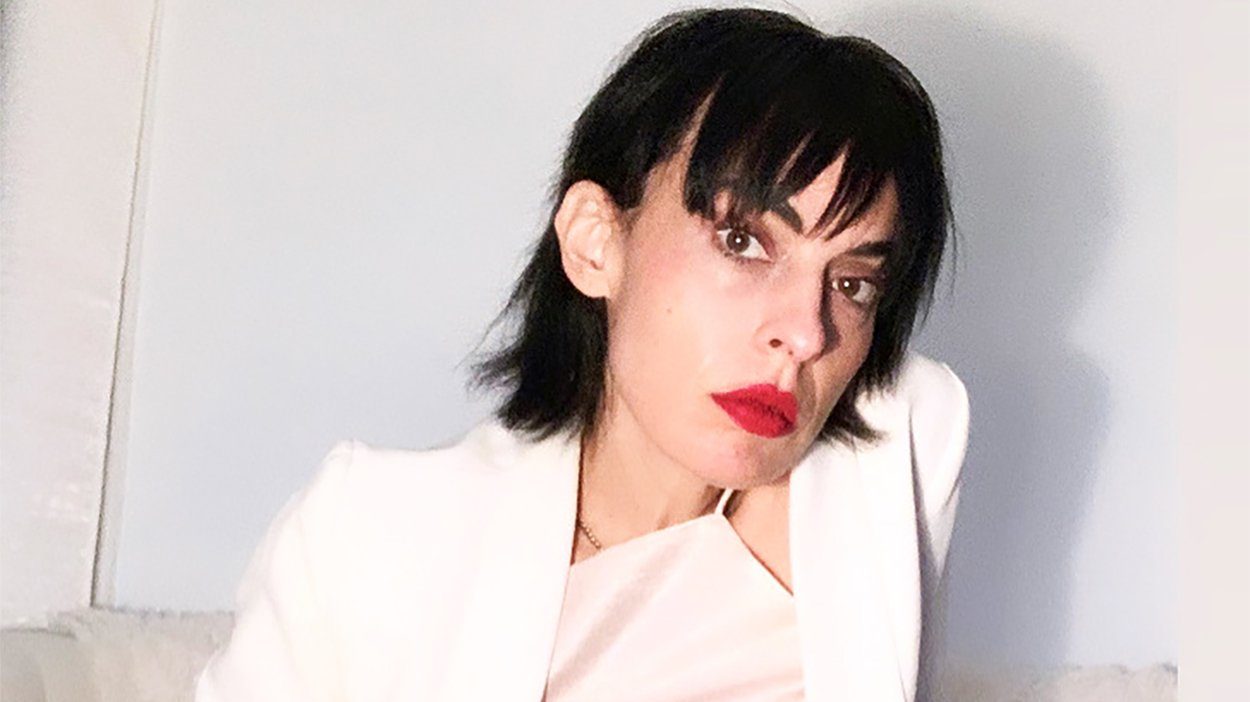

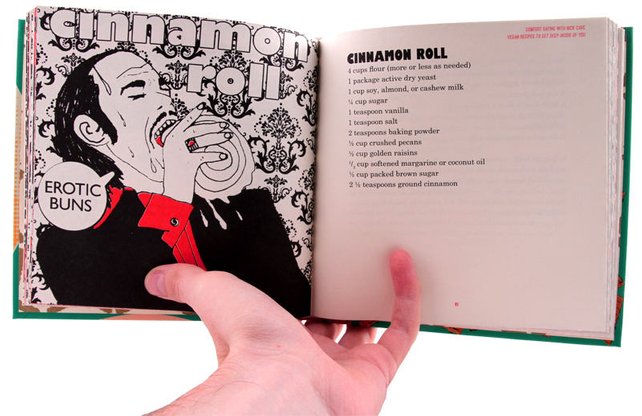


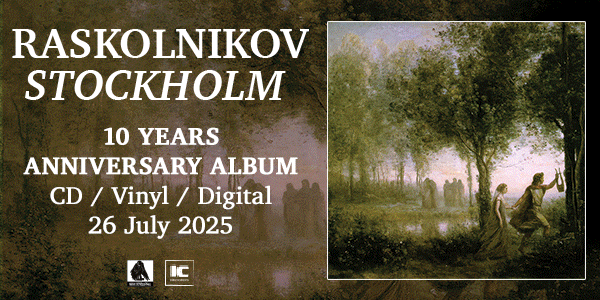
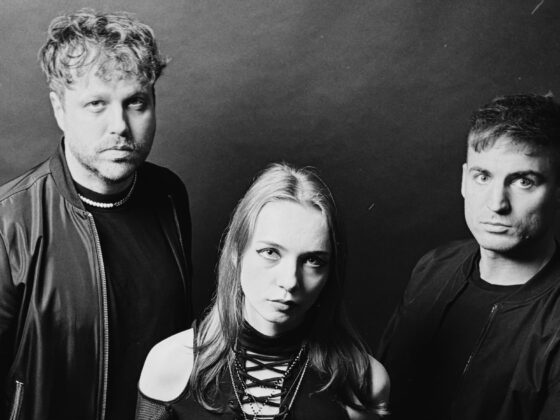



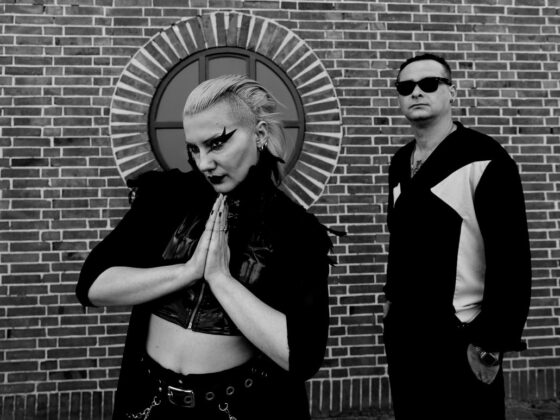




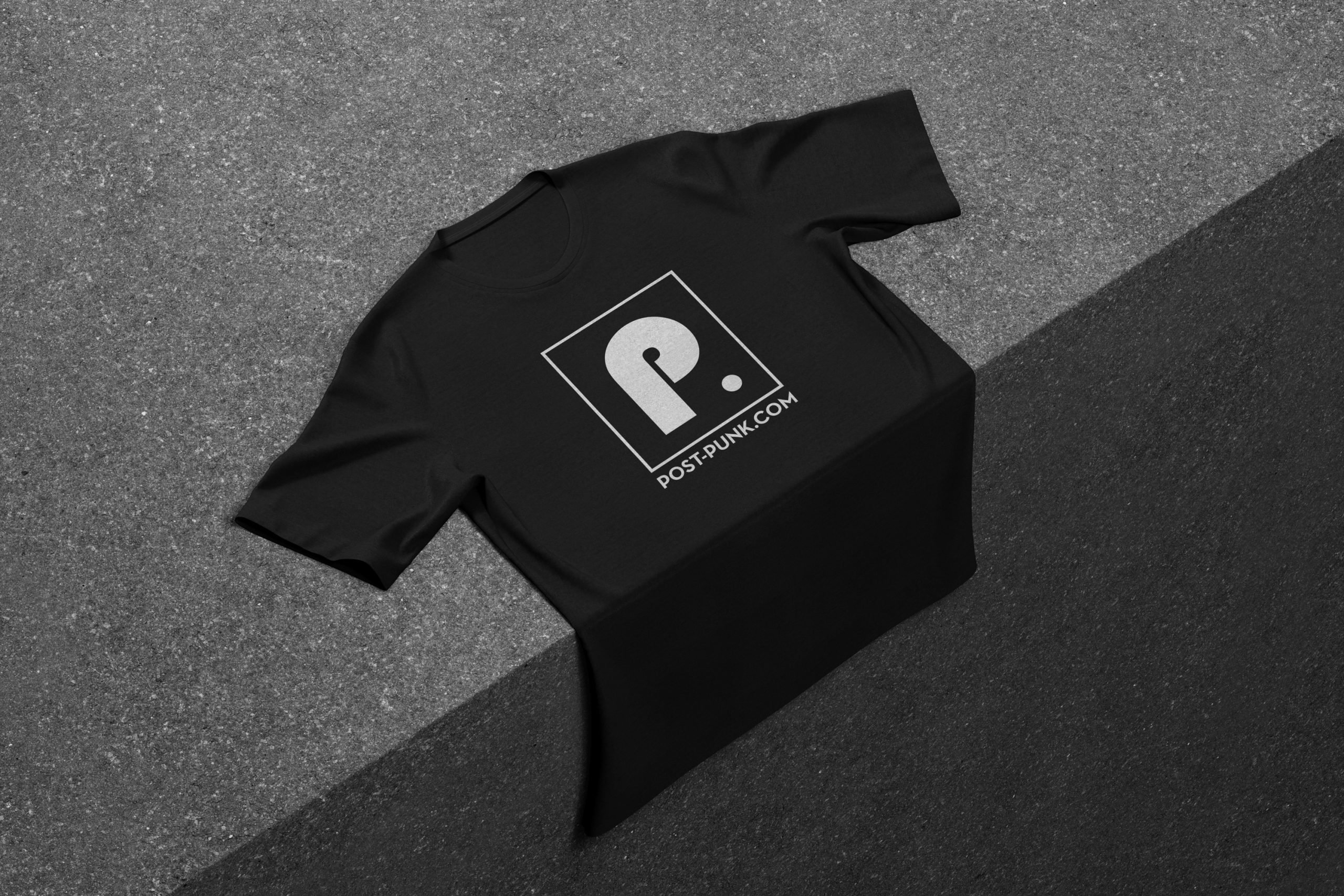 Or via:
Or via: